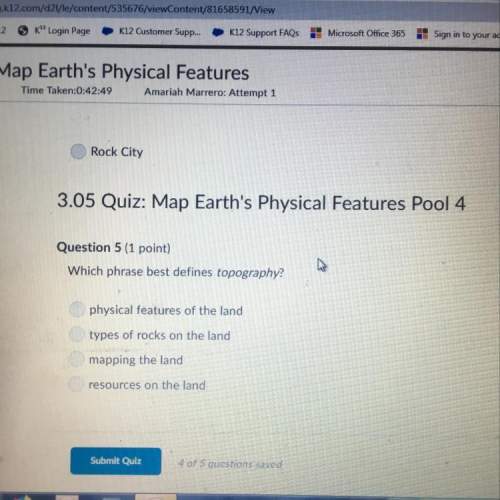
Chemistry, 27.05.2021 20:00 cutechickens13
1. Michael is studying the factors that affect reactivity of metals. He wants to test the effect that
different concentrations of an acid will have on the reaction of a metal with acid. As he sets
up and completes his experiment, which of the following experimental designs would be
most likely to help him answer his question?
A. Allow several metal samples to soak in different amounts of acid of a single concentration
and then measure the amount of metal lost on each.
B. Prepare solutions of different acid concentrations, measure 50 milliliters of each into
different beakers, and place metal samples of different types but of the same mass into
the beakers.
C. Prepare solutions of different acid concentrations, measure 50 milliliters of each into
different beakers, and place metal samples all the same type and mass into the beakers
for the same amount of time and then measure the mass lost.
D. After allowing a small metal sheet to be exposed to one acid concentration, place it in
different acid concentrations, then measure the surface area that is corroded.

Answers: 3


Another question on Chemistry

Chemistry, 21.06.2019 20:30
This chart represents the melting point of several substance. what besy explains the high melting point of the salt?
Answers: 2

Chemistry, 21.06.2019 21:30
How air particles exert a pressure on the inside of the balloon
Answers: 1

Chemistry, 22.06.2019 03:10
The covalent compound acetylene, which is the fuel of the oxyacetylene torch used by welders, has the molecular formula c2h2. the covalent compound benzene, a commercial solvent, has the molecular formula c6h6 each of these covalent compounds contains carbon and hydrogen atoms in a one-to-one ratio. would it be correct to write the chemical formulas of each as ch? explain.
Answers: 1

Chemistry, 22.06.2019 08:00
Straightforward questions answered in the powerpoint slidesreaction: heating the starting materials under refluxwhat does it mean to heat under reflux? why do we choose water as the reflux solvent? what are boiling chips used for? why do we put a condenser on top of the reaction? why do we add heat and let the reaction stir for 30 minutes? why do we add sulfuric acid to the reaction after it cools as opposed to when it’s still hot? separation: filtration of precipitatewhy don’t we do an aqueous and organic extraction in the separatory funnel? why do you rinse the salicylic acid on the filter with ice cold water? purification: recrystallization of salicylic acid (no hot filtration needed)what is the difference in the amount of room temperature water vs. boiling water needed to dissolve the salicylic acid (assume a 1.2 gram yield of salicylic acid)? remember, in the lab if you need x ml of boiling water to dissolve a solid, then you should add a little more (definitely no more than 1.5 times the theoretical amount) to ensure it doesn’t recrystallize prematurely.analysis: melting point of salicylic acidwhat can you conclude if the melting point of the salicylic acid you just synthesized is 152-155oc and the 1: 1 mix of your product and “synthetic” salicylic acid is 151-154oc?
Answers: 1
You know the right answer?
1. Michael is studying the factors that affect reactivity of metals. He wants to test the effect tha...
Questions

Chemistry, 09.01.2021 08:00

Mathematics, 09.01.2021 08:00


Physics, 09.01.2021 08:00




Health, 09.01.2021 08:10


English, 09.01.2021 08:10

History, 09.01.2021 08:10




Mathematics, 09.01.2021 08:10

History, 09.01.2021 08:10




History, 09.01.2021 08:10




